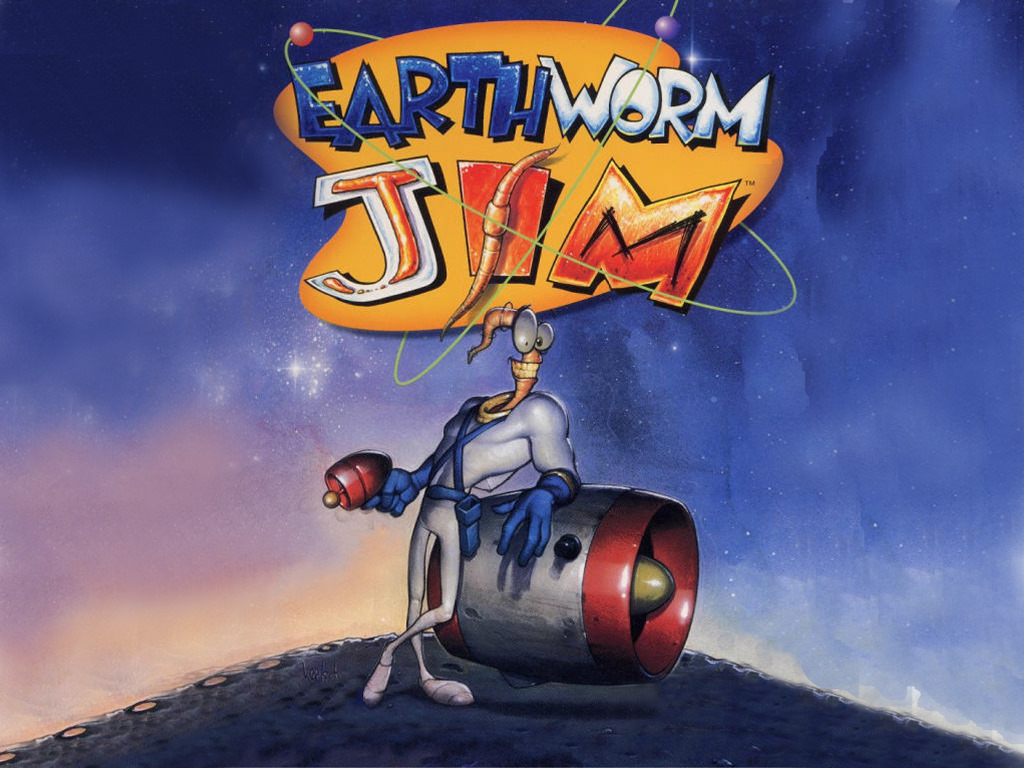The two men responsible for one of the more memorable video game characters of the mid-1990s do not always see eye-to-eye. On July 2012, game designer David Perry expressed his certainty that a new game on Earthworm Jim would eventually see the light of day. However, Earthworm Jim’s creator, Doug TenNapel, viewed things differently. “[I don’t] see how it’s going to happen,” he said a month later. “And if it does, it will likely be done without me.”
Two decades ago, matters were not as uncertain. Back then, Earthworm Jim was poised to join the pantheon of video game icons like Sonic, Mariom, and Crash Bandicoot. He came mightily close.
Background
By 1993, toy manufacturer Playmates Toys had made a lot of money making Teenage Mutant Ninja Turtles figures. By the early 1990’s, however, the company wanted to implement a new character, and not with the traditional toy-line-and-cartoon route. Instead, Playmates wanted to create a character through video games. Playmates recruited Perry, a computer programmer, and financed him to start the company that would be charged with developing the game: Shiny Entertainment.
Creation
Playmates and Shiny Entertainment were inspired by the enormous success of Sonic the Hedgehog, Sega’s mascot. When TenNapel walked in with a simple sketch of an earthworm, Shiny believed it had found its own mascot: Earthworm Jim. Shiny bought the rights to the character from TenNapel, who went to work on level ideas, additional characters, and the game environment, while also providing Jim’s voice. Meanwhile, Shiny worked on the game mechanics.
Early Success
Earthworm Jim was released as a 2D side-scrolling platformer on August 2, 1994 for the Sega Genesis and the Super Nintendo. The game was critically acclaimed for a number of reasons. First is the main protagonist: a small gun and Pocket Rocket-wielding earthworm wearing a power suit that gives him superhero-like powers.
Then there are the supporting characters that are just as colorful, with wacky names like Princess Whats-Her-Name, Psy-Crow and Queen Slug-for-a-Butt that lampooned video game clichés. The cartoon-like animation of the game is fluid and vibrant, with a hand-drawn style that was uncommon for 16-bit games at the time.
Electronic Gaming Monthly in particular was impressed enough to name it the Best Genesis Game of 1994. Thinking it wise not to tinker with the winning formula, Playmates — now Interactive Entertainment — released the sequel, Earthworm Jim 2, on December 22, 1995. Although less critically acclaimed than the original, the game also received positive reviews.
Decline
The years following the first two titles saw a glut of material related to Earthworm Jim: TV shows, comic books, and ports to other video game platforms. However, the departure of much of the original development team, coupled with frequent shifts in the series’ publishing rights stalled any further progress the Earthworm Jim franchise could have made. It took almost five years for a brand-new game to appear: 1999’s disastrous Earthworm Jim 3D for the Nintendo 64.
There hasn’t been a new game since, and TenNapel is not keen on ending the hiatus. Claiming that he doesn’t get royalties or credit for creating Earthworm Jim, he lamented that the character had “largely been ruined over the past 20 years,” and he’s only willing to return the animated earthworm to his former glory if he can have complete creative control, adding: ” I would never work on a Jim game if someone else was in charge of expressing the character in the game.”
Byline
Doug Christiansen focuses on video games, mtg cards, geek conventions, gadgets & gizmos, computer software, futuristic technology, movie trivia and other nerdy topics; those looking to further develop their mtg collections should take a peek at Card Kingdom Magic Cards.
Image credit goes to covert626.

